Results 8,041 to 8,050 of 12091
Thread: Anandtech News
-
04-17-18, 06:41 PM #8041
Anandtech: Intel Announces Chip-Level Security Initiatives, iGPU-Based Malware Scanni
Taking place this week is the annual RSA conference, which has evolved to become a major trade show for security products and technologies. As one might expect, it's also frequently used as a springboard for security-related announcements, and this year is no exception.
Of particular interest here is Intel, who is making two announcements regarding silicon-level technologies designed to improve the security of modern computers. The first one is for what Intel is calling Threat Detection Technology (TDT), a package of capabilities that can be used by software for security screening and threat detection. The second one is the Security Essential framework that includes a consistent set of root-of-trust hardware security capabilities supported across Intel’s CPU product stack.
Intel's Threat Detection Technology comes in two parts: Accelerated Memory Scanning, and Intel Advanced Platform Telemetry. AMS, arguably the most interesting aspect of today's announcement, is a means to use the company’s iGPUs to accelerate memory scanning for malware, with the goal of reducing the CPU performance impact and scanning in a more energy-efficient manner overall. Currently anti-virus/anti-malware programs use the CPU to scan memory and storage for malicious applications, and while multi-core CPU designs mitigate the worst system impacts of AV scanning, there's still a potential hit to responsiveness. So Intel is looking to address this by moving parts of AV scanning off of the CPU entirely and in to their often underutilized integrated GPUs.
The focus of Intel's efforts here is on one specific aspect of AV scanning: in-memory (resident) malware, which doesn't get caught in transnational disk I/O checks and instead requires scanning a system's complete memory to check for. The entire process is essentially little more than pattern matching - something GPUs are proving good at - so Intel believes that GPUs would be a good fit. Meanwhile the idea that this is also a more energy-efficient method is an interesting one, albeit one where it would be nice to see some data, but it's conceptually sound.
Intel’s AMS will be first supported by Microsoft’s enterprise-focused Windows Defender Advanced Threat Protection software, which will be rolling out support for the feature later this month. On the hardware side of matters AMS is supported on Intel's current-generation Gen 9/9.5 iGPUs, meaning that it will be available on 6th Gen Core (Skylake) and newer processors. Intel says that usage of AMS reduces CPU load during memory scan by an order of magnitude (from 20% to 2%) in Windows Defender ATP, which looks significant.
Meanwhile, the second part of Intel's TDT is Intel Advanced Platform Telemetry (IAPT), which uses Intel's existing platform telemetry hardware capabilities combined with machine learning algorithms to speed up the detection of advanced threats that may not be documented. Specifically, Intel is using low-level performance counters and other telemetry as a canary for potential issues; a sudden, irregular change in the counters may indicate that malware is present, particularly exposing anything that's actively trying to use side-channel attacks (e.g. Spectre) and which take constant prodding to utilize.
As this isn't signature based it's instead triggered on the basis of broader behavior patterns, which is where machine learning comes in. Essentially the idea is for AV software vendors to compile telemetry from multiple machines, giving them an evolving baseline to work from and making unusual patterns and machines stick out. Intel isn't saying very much about this capability, but according to The Register Intel has said that "In general, data is anonymized and generalized." IAPT will initially be supported by the Cisco Tetration platform for datacenters that protects cloud workloads.
Finally, Intel is also introducing Intel Security Essentials — a consistent set of security-related capabilities to be supported by the Atom-, Core- and Xeon-branded products. The feature set will encompass a number of Intel's existing security features under a single name, including secure boot, hardware protections (for data, keys, etc.), cryptography accelerators and trusted execution enclaves. Overall Intel is aiming to include all of its advanced security technologies across its entire product stack to improve security of PCs in general, so combining these features into a single, common package helps to promote that change and clarify that the same base features are supported everywhere. The move makes a great sense as it means that software makers will be able to support a unified set of security capabilities, knowing that all of them will be supported by all PCs running Intel’s up-to-date processors.
Buy Intel Core i7-8700K on Amazon.com
Related Reading:
- Intel Wraps Up Spectre Patching, Partially Cancels Plans For 1st Gen Core & Core 2 Processors
- Meltdown & Spectre: Analyzing Performance Impacts on Intel's NUC7i7BNH
- Intel Publishes Spectre & Meltdown Hardware Plans: Fixed Gear Later This Year
- Intel CEO Addresses the Industry on Meltdown and Spectre Issues in Open Letter
- Intel Forms Product Assurance and Security Group amid Meltdown and Spectre Fallout
- Understanding Meltdown & Spectre: What To Know About New Exploits That Affect Virtually All CPUs
More...
-
04-18-18, 10:07 AM #8042
Anandtech: AOC Announces AGON AG322QC4 32-Inch Curved LCD with FreeSync 2 & DisplayHD
AOC on Wednesday introduced its first gaming display that supports AMD’s FreeSync 2 technology, making this just the second line of FreeSync 2 monitors to be announced thus far. The curved 32-inch AGON AG322QC4 monitor has a QHD resolution as well as a 144 Hz refresh rate, which is in line with other gaming monitors these days. The monitor also carries DisplayHDR 400 certification, meaning it falls under the VESA's entry-level HDR tier.
The AOC AGON AG322QC4 is based on a 32-inch VA panel featuring a 2560×1440 resolution, a 400 nits peak brightness, a 2000:1 static contrast ratio, a 144 Hz refresh rate, a 4 ms GtG response time, and a 1800R curvature. The key selling points of the AGON AG322QC4 are of course AMD’s FreeSync 2 with Low Framerate Compensation technology as well as the DisplayHDR 400 badge. AOC yet has to reveal the FreeSync 2 range supported by the display, but since the monitor is a couple of months away, its firmware may still be in development. Meanwhile, since AMD mandates all FreeSync 2 displays to support LFC, which requires the maximum framerate to be at least 2x the minimum framerate, the FreeSync range of the AG322QC4 should be pretty wide (from at least 72 Hz to 144 Hz).
AOC itself does not define color gamuts supported by the AGON AG322QC4, so the only thing that is safe to say here is that it does support the sRGB for Windows and something more than that because of its key features. AMD’s FreeSync 2 requirements include mandatory support for a wider-than-sRGB color range, but does not include specifics (e.g., mandatory 95% of the DCI-P3). Meanwhile, the DisplayHDR 400 spec only mandates 95% of the sRGB-like BT.709 color space for the color gamut. In other words, nothing about this HDR monitor specifically requires a DCI-P3 color gamut. So if the AG322QC4 can support a wider color gamut, then it's not in any of the specificiations at this time.
Moving on, as a gaming monitor AOC’s AGON displays not only support premium features, but are also outfitted with the company’s proprietary firmware-based technologies aimed at the target audience. Therefore, the AG322QC4 supports various Game Mode presets for different types of genres, the Shadow Control function to quickly brighten dark areas, Low Input Lag mode for fast-paced games (not sure whether the LIL will be needed for FreeSync 2-supporting games), and some other features. The monitor uses AOC’s Ergo Base stand that can adjust height, tilt, and swivel. As a bonus capability, the AGON AG322QC4 display has LEDs (red, green or blue) on the lower bezel and the back of the chassis with three intensity levels for personalization, and to emphasize the gaming nature of the product.
As for connectivity. The AGON AG322QC4 is equipped with DisplayPort and HDMI inputs, a dual-port USB 3.0 hub as well as 3.5-mm audio jacks for headphones and a mic.
Gallery: AOC Announces AGON AG322QC4 32-Inch Curved LCD with FreeSync 2 & HDR 400The AOC AGON AG322QC4 General Specifications Panel 31.5" VA Native Resolution 2560 × 1440 Maximum Refresh Rate 144 Hz Response Time 4 ms GtG Brightness 400 cd/m² (peak) Contrast 2000:1 Backlighting LED Viewing Angles 178°/178° horizontal/vertical Curvature 1800R Aspect Ratio 16:9 Color Gamut >95% sRGB/BT.709 DisplayHDR Tier 400 Dynamic Refresh Rate Tech AMD FreeSync 2 Pixel Pitch 0.2767 mm² Pixel Density 91.79 PPI Inputs DP
HDMIAudio 3.5 mm input and output USB Hub 2 × USB 3.0 Type-A connectors
1 × USB 3.0 Type-B inputMSRP EU: €599
UK: £529
US: ~$600 (not confirmed)



_thumb.png)

AOC plans to start selling its AGON AG322QC4 display in Europe this June. The LCD will be priced at £529 in the U.K. and €599 in mainland Europe. At this point we do not have any information regarding availability and pricing of the AG322QC4 in the U.S., but it is safe to say that it will hit North America this summer and judging by its MSRP in the EU, it is highly likely that AOC’s 32-inch FreeSync 2-supporting LCD will carry a ~$600 price tag without taxes in the U.S.
AMD introduced its FreeSync 2 technology in early 2017. Samsung was the first to support the technology with its Quantum Dot-enhanced displays in early June last year and has been enjoying its FreeSync 2 monopoly since then. Initially, Samsung’s C49HG90, C32HG70, and C27HG70 suffered from teething problems — their FreeSync range was limited to 120 – 144 Hz at launch, but an updated firmware decreased the minimum to 72 Hz later on. Since the 32-inch FreeSync 2 monitor has been available on the market for a while, Samsung’s partners are offering it below its MSRP of $699. For example, the 32-inch FreeSync 2 supporting C32HG70 is now available for $616 - $646 from Amazon. With the arrival of other FreeSync 2-compatible displays, such as the AGON AG322QC4, prices of such LCDs will inevitably drop.
Related Reading:
- Samsung Announces First Freesync 2 Monitors: CHG70 & CHG90 - Quantum Dots, Up to 49”, 144 Hz, DCI-P3
- AMD Announces FreeSync 2: Easier & Lower Latency HDR Gaming
- Microsoft and AMD to Bring FreeSync 2 Support to Xbox One S and Xbox One X This Spring
- AOC Expands AGON Family with Curved AG322QCX and AG272FCX 144 Hz Displays
- AOC Launches the AG352QCX: 35-Inch 200 Hz 2560×1080 Curved Display with Adaptive-Sync
- AOC Announces the AGON AG352UCG 21:9 Curved Display: 35", 3440×1440, 100Hz with G-Sync
More...
-
04-18-18, 10:07 AM #8043
Anandtech: The Emperor of Efficiency: Corsair's AX1600i PSU Rules Alone (Review)
In today's review we are taking a look at Corsairs AX1600i, the company's new flagship PSU. Although it is physically smaller than its predecessor, the AX1600i brings higher-than 80Plus Titanium efficiency levels and a maximum output of 1600 Watts. Its retail price of $500 is forbidding for most users, but the Gallium-Nitride MOSFETs and other innovations at the heart of Corsair's new bruiser paint an incredible picture of what we can expect for the future of PSUs.
More...
-
04-18-18, 11:45 AM #8044
Anandtech: Lenovo Lists ThinkPad E485/E585: AMD’s Ryzen Mobile Land in Business PCs
Lenovo has quietly published specifications of its ThinkPad E485 and ThinkPad E585 laptops based on AMD’s Ryzen Mobile processors on its website. Coming in classic black chassis and featuring ergonomic keyboards, the new notebooks are the first Ryzen Mobile-powered PCs aimed at the SMB market segment. The new ThinkPads are equipped with a dTPM 2.0 chip and are offered with various Lenovo services not available with consumer computers.
Lenovo’s ThinkPad E485 and ThinkPad E585 notebooks will be offered in various configurations targeting different a wide range of price points. Different configs will be based on AMD’s Ryzen 7 2700U with the Radeon Vega 10, Ryzen 5 2500U with the Radeon Vega 8 or Ryzen 3 2200U with the Radeon Vega 3 APUs. The laptops can be equipped with up to 32 GB of DDR4 memory using two SO-DIMMs likely running at 2400 MT/s. As for storage, the systems may feature a 512 GB PCIe/NVMe M.2 SSD, a 500 GB HDD, a 1 TB HDD or a combination of an SSD and a hard drive.
The new AMD Ryzen Mobile-based ThinkPads are generally identical, but as their model numbers suggest, the model E485 has a 14-inch screen, whereas the model E585 features a 15.6-inch display. Speaking of displays, the manufacturer plans to offer two antiglare LCD options with its ThinkPad E485 and E585 laptops: one with a 1366×768 resolution, another with a 1920×1080 resolution. Apart from monitors, the laptops feature slightly different keyboards. The 15.6-inch versions feature a full-sized keyboard with a numpad, whereas the 14-inchers come with a classic notebook keyboard layout. Like other ThinkPads, the new models E485 and E585 are equipped with ergonomic keyboards featuring trackpoints and trackpads.
Moving on to connectivity of Lenovo’s ThinkPad E485/E585 notebooks. The notebooks are outfitted with a 1×1 802.11ac + Bluetooth 4.1 controller, a GbE port, a USB 3.1 Type-C header (that is used for data, power, display, and docking connectivity), two USB Type-A (3.0 and 2.0) headers, an HDMI output, a micro SD card reader, a 720p webcam, a TRRS audio jack for headsets, Dolby Advanced Audio-badged speakers, a microphone array, and so on. The systems are outfitted with a discrete TPM 2.0 chip to enable support for various security applications. Meanwhile, only select ThinkPad E485/E585 SKUs will feature fingerprint readers, so biometric security will not be pervasive across the whole range of these laptops.
Lenovo says that both AMD Ryzen Mobile-based laptops come equipped with a 45 Wh battery rated for 9-hour operation. With its larger display I would expect the E585 to consume more power than the E485 and therefore offer a shorter battery life, but interestingly Lenovo rates both at 9 hours. The good news is that the E585 can accommodate a larger battery pack and therefore offer a longer battery life.
Next up are dimensions and weight. At 21.9 mm z-height, the 14-inch ThinkPad E485 appears to be slightly thicker than the 15.6-inch ThinkPad E585 that has a 19.95 mm z-height. As for the weight, the smaller E485 weighs 1.75 kg and is noticeably lighter than the E585 that weighs 2.1 kg. Neither of the Ryzen Mobile-based ThinkPads can be called thin-and-light, yet keep in mind that these systems feature metallic skeletons and come in chassis made of thick plastics, so they are pretty rugged (not ThinkPad X1 kind of rugged though).
Buy Lenovo Ideapad 720S: 13.3-inch, AMD Ryzen 5 2500U, 8 GB DDR4, 256 GB PCIe SSD on Amazon.com
If you want to get a thin-and-light laptop featuring an AMD Ryzen Mobile, you should probably take a look at the Ideapad 720S that comes in a 13.6-mm thick aluminum chassis and weighs around 1.14 kilograms (since this is a consumer model it comes with Windows 10 Home and without dTPM 2.0 though).
The new Lenovo ThinkPad E485 and ThinkPad E585 notebooks are expected to be available in the coming weeks. When it comes to pricing, it is set to vary greatly. There will be very affordable laptops powered by AMD’s Ryzen 3 2200U APU and featuring hard drives along with ‘HD’ displays that will probably retail for ~$600 or less, whereas the premium machines based on AMD’s Ryzen 7 2700U and accompanied by UHD panels and dual-drive storage subsystems will cost considerably higher.General Specifications of Lenovo's ThinkPad E485 and E585 Laptops ThinkPad E485 ThinkPad E585 Display Diagonal 14" 15.6" Resolution 1366×768 or 1920×1080 Type IPS CPU AMD Ryzen 3 2200U
2C/4T
2.5 - 3.4 GHz
mXFR Support
1 MB L2 + 4 MB L3
Vega 3 iGPU
15 WAMD Ryzen 5 2500U
4C/8T
2.0 - 3.8 GHz
mXFR Support
2 MB L2 + 4 MB L3
Vega 8 iGPU
15 WAMD Ryzen 7 2700U
4C/8T
2.2 - 3.8 GHz
mXFR Support
2 MB L2 + 4 MB L3
Vega 10 iGPU
15 WGPU AMD Vega 3
192 stream processors
1100 MHzAMD Vega 8
512 stream processors
1100 MHzAMD Vega 10
640 stream processors
1300MHzRAM Capacity up to 32 GB Type DDR4 Storage SSD up to 512 GB PCIe/NVMe SSD HDD 500 GB HDD (7200 RPM) or 1 TB HDD Hybrid SSD and HDD on select SKUs Wi-Fi 1×1 802.11ac Wi-Fi module (unknown vendor) Bluetooth 4.1 USB 2 × USB 3.0 Type-A
1 × USB 2.0 Type-A
1 × USB 3.0 Type-C (power, data, DP 1.2)Ethernet GbE Other I/O HDMI, 720p webcam, TRRS connector for audio, speakers, microphone, microSD card reader Figerprint Reader on select SKUs Security discrete TPM 2.0 chip Dimensions Width 329.3 mm | 12.96 inches 369 mm | 14.53 inches Length 242 mm | 9.53 inches 252 mm | 9.92 inches Thickness 21.9 mm | 0.83 inches 19.95 mm | 0.78 inches Weight 1.75 kg 2.1 kg Battery Capacity 45 Wh (9 hours) 45 Wh (? 13 ? hours) Operating System Microsoft Windows 10 Pro Support & Services Premier Support by 'advanced-level technicians with the expertise' by phone.
Accidental Damage Protection (ADP) - a fixed-cost, fixed-term protection plan.
Warranty extensions.Price ? ?
Related Reading:
- Dell Launches AMD Ryzen-Based Inspiron 13 7000 2-in-1 Convertible, Starts at $700
- Acer Unveils Nitro 5: 15.6-inch Gaming Laptop with AMD Ryzen Mobile & Radeon RX560
- More Ryzen Mobile: Acer Swift 3 with 2700U and 2500U Listed, From $750
- AMD Makes a Surprise Appearance: Ryzen Mobile with Qualcomm LTE
- Ryzen Mobile Now On Sale: HP’s ENVY X360
- HP Announces ENVY x360 15 With Ryzen Mobile
- Ryzen Mobile is Launched: AMD APUs for Laptops, with Vega and Updated Zen
More...
-
04-18-18, 01:10 PM #8045
Anandtech: Cooler Master Announces ML120R/240R AIO Liquid Coolers: Addressable RGB
Cooler Master has unveiled new coolers in their MasterLiquid line of closed loop AIO cooling that was released in late 2017. The MasterLiquid ML240R RGB (240mm) and ML120R RGB (120mm) feature a newly designed pump along with 12 addressable RGB LEDs on the water block and eight addressable RGB LEDs on each fan. Users are able to customize each LED individually through RGB lighting software through select ASUS, MSI, and ASRock motherboards as well as Cooler Master’s MasterPlus+ software (in beta testing, due out in May) for complete control over your lighting and cooling ecosystem.
Buy MasterLiqui ML12R on Newegg
The outside of the pump has a gloss finish around the outside along with a ring of 12 addressable RGB LEDs with 16.7 million colors surrounding the cylinder-shaped CPU block/pump. The RGB LEDs shine through a frosted plastic diffuser in an effort to provide uniform color. In the middle of the circle is the Cooler Master logo, also illuminated. Both the ML120R and ML240R are equipped with an addressable RGB LED controller for use with non-addressable RGB components and easy lighting and mode control. Connecting the pump to the radiator is sleeved, double-layer FEP (Fluorinated Ethylene Propylene) tubing which is said to be durable and flexible as well as giving it a more premium aesthetic than those without the additional sleeving.
The internals on the newly redesigned pump is a low-profile dual chamber unit constructed from PPS (Polyphenylene Sulfide) and glass fiber said to resist chemicals and remain unaffected by moisture or immersion in water. Cooler Master also says it is impervious to oxidation and corrosion. The pump itself uses a tri-phase motor intended to help keep power use and noise level down (less than 15 dBA). In addition, the pump is also dual chambered and keeps the cooled and warmed water separate. The cold plate uses machined microchannels for additional water contact surface to help get rid of the heat while the base of the cold plate has a brushed finish.
The matte black aluminum radiators are custom designed low resistance radiator said to allow for a higher flow rate and heat exchange efficiency for good cooling performance. Fin density is not listed in the specifications. Airflow through the radiator is handled by the MasterFan MF120R ARGB fans Cooler Master says are designed to maximize air pressure for AIO liquid cooling. Each 4-pin PWM controlled fan has eight ARGB LEDs able to be controlled through MasterPlus+ or motherboard software. These are the same fans used on the previous ML liquid coolers.
The MasterLiquid ML120R/ML240R RGB are available for purchase today. The 240R is priced at $119.99 and the 120R is $99.99. The Cooler Master MasterPlus+ lighting software should be available in May. Users are still able to use the provided addressable RGB controller for lighting mode control through the compatible RGB Sync Motherboards. These are not quite as inexpensive as the ML120L we saw a few months ago using the same radiator and fans, but still pretty inexpensive with ARGB LEDs and control through the included controller and motherboard software.
Related Reading:MasterLiquid ML120R / ML240R CPU Socket Compatibility Intel- LGA 2066/ 2011-3 / 2011 / 1151 / 1150 / 1155 / 1156 / 1366 / 775
AMD - AM4 / AM3+ / AM3 / AM2+ / AM2 / FM2+ / FM2 / FM1Radiator Material Aluminum Dimensions ML120L - 157 x 119.6 x 27mm
ML240L - 277 x 119.6 x 27mmFan Dimensions 120 x 120 x 25mm Speed 650 ~ 2000 RPM (PWM) +/- 10% Air Flow 66.7 CFM (Max) Air Pressure 2.34 mmH2O (Max) MTTF 160,000 Hours Noise Level 6 ~ 30 dBa Connector 4-Pin (PWM) Pump Dimensions 83.6 x 71.8 x 52.7mm MTTF 70,000 Hours Noise Level < 15dBa Connector 3-Pin Price ML120R RGB -
ML240R RGB -Warranty 2 Years Motherboard Compatibility ASUS
ROG Maximus X Formula
ROG Maximus X Code
ROG Maximus X Hero (Wi-Fi AC)
ROG Maximus X Hero
ROG Strix Z370-E Gaming
ROG Strix Z370-F Gaming
ROG Strix Z370-I Gaming
Rampage VI Extreme
Prime X299-Deluxe
ROG Strix X299-E Gaming
ROG Strix X299-XE Gaming
ROG Zenith Extreme
ROG Strix X399-E Gaming
ROG Strix X370-I Gaming
ROG Crosshair VI Extreme
MSI
Z370 Godlike Gaming
Z370 Gaming Pro Carbon AC
Z370 Gaming Pro Carbon
Z370I Gaming Pro Carbon AC
ASRock
(Launches in April)- EVGA Releases CLC120 CL11 AIO CPU Cooler: Simple and Affordable
- NZXT Expands Kraken AIO Lineup: Their First 360mm AIO, New Kraken M Series
- EKWB Announces EK-MLC Phoenix AIO: MOdular and Expandable Liquid Cooling Family
- Enermax Launches LiqTech TRO AIO LCS for AMD's Threadripper: 100% IHS Coverage, 500W TDP
- The Fractal Design Celsuis S24 & S36 AIO Coolers Review
- EKWB Releases 420mm and 560mm CoolStream Slim Radiators
- EKWB Unveils Threadripper Edition EK Supremacy EVO CPU Water Blocks
- EKWB Releases New Varder EVO Fan with Start-Stop Function
More...
-
04-18-18, 03:39 PM #8046
Anandtech: Western Digital Launches Ultrastar DC HC530 14 TB PMR with TDMR HDD
On Wednesday, Western Digital introduced its highest capacity hard drive based on conventional magnetic recording to date. The HGST Ultrastar DC HC530 can store 14 TB of data and uses perpendicular magnetic recording (PMR) with two-dimensional magnetic recording (TDMR) read heads to ensure consistent read performance. Because of extremely high areal density, the new HDDs offer up to 267 MB/s sustained transfer rate, slightly higher when compared to previous-gen drives. The new hard disks will be available in high volumes later this year.
The HGST Ultrastar DC HC530 hard drive is based on Western Digital’s latest helium-filled HelioSeal platform (5th generation) featuring eight 1.75 TB PMR platters and TDMR heads with two readers to ensure predictable read performance by mitigating effects of inter-track interference. The new platform not only packs eight 3.5-inch platters and features new heads, but also uses revamped (3rd generation) dual stage microactuators to improve head positioning and rotations vibration robustness, thus, advancing reliability of the datacenter-grade HDD in general. Other ingredients of the new HelioSeal platform include a top and bottom attached motor (with a 7200 RPM spindle speed), top and bottom attached disk clamps, RVFF sensors, humidity sensors, and so on. The new datacenter-grade Ultrastar DC HC530 HDDs are rated for a 550 TB/annual workload, a 2.5 million hours MTBF, and are covered by a five-year limited warranty.
The Ultrastar DC HC530 will be available only in 14 TB capacity with 4Kn and 512e sectors. The hard drive will feature a 7200 RPM spindle speed, a 512 MB buffer, and a SATA or SAS interface. The manufacturer will offer Ultrastar DC HC530 HDDs with hardware self-encryption capability, instant secure erase feature, TCG encryption, and TCG FIPS encryption to various parties. When it comes to performance, HGST declares up to 267 MB/s sustained transfer rate, a 4.16 ms average latency, a 7.5 ms seek time.
HGST’s Ultrastar DC HC530 14 TB HDD will not be the only datacenter-grade 14 TB CMR hard drive on the market: it will be challenged by Seagate’s Exos 14 featuring eight platters (PMR+TDMR) as well as Toshiba’s Toshiba’s MG07ACA featuring nine platters (PMR only). All of these drives are drop-in compatible with existing backplanes and provide a 40% more storage than their 10 TB predecessors, enabling datacenter operators to store 3360 TB of data per rack (compared to 2440 TB with 10 TB HDDs). This naturally increases storage capacity per square meter and per watt, which is what companies who run large datacenters want.HGST Ultrastar DC HC530 General Specifications SATA SAS Capacity 14 TB RPM 7200 RPM Interface SATA 6 Gbps SAS 12 Gbps DRAM Cache 512 MB Format: Sector Sizes 4Kn: 4096
512e: 5124Kn: 4096, 4112, 4160, 4224
512e: 512, 520, 528Helium-Filling Yes Areal Density 904 Gbit/inch2 Sustained Transfer Rate 267 MB/s Average Latency 4.16 ms Seek Time (read/write) 7.5 ms Acoustics 2.0/3.6 Bels Power Rating Idle 5.6 W 6.3 W Operating 7.6 W 10.2 W Power consumption efficiency at Idle 0.4 W/TB 0.45 W/TB MTBF 2.5 million hours Warranty 5 Years P/Ns, Features 4Kn Instant Secure Erase WUH721414ALN6L0 WUH721414AL4200 Secure Erase WUH721414ALN6L4 WUH721414AL4204 TCG Encryption - WUH721414AL4201 TCG w/FIPS Encryption - WUH721414AL4205 512e Instant Secure Erase WUH721414ALE6L0 WUH721414AL5200 Secure Erase WUH721414ALE6L4 WUH721414AL5204 TCG Encryption - WUH721414AL5201 TCG w/FIPS Encryption - WUH721414AL5205
Meanwhile, there is one thing to keep in mind about contemporary high-capacity hard drives. While datacenter-grade HDDs have been steadily increasing their capacity over the recent years (capacity of PMR HDDs has nearly doubled in just three years), their IOPS performance stayed flat at around 80 IOPS random reads, which means that their IOPS-per-TB performance declined from 10 IOPS per TB on an 8 TB nearline HDD to 5.7 IOPS per TB on a 14 TB nearline HDD. IOPS-per-TB is a critical performance metrics for cloud datacenters that deserves a separate coverage (so stay tuned), but in a nutshell, if IOPS-per-TB drops below a certain level, datacenter operators cannot guarantee time to data for their customers on a particular drive. Various datacenters have different performance requirements, but 5.7 IOPS per TB is considered to be the lowest viable performance for a nearline HDD (at least based on one of Seagate's presentation that uses data from operators of massive scale-out datacenters). There are applications that need a higher random performance and they will not be able to use these 14 TB drives. There are, of course, other applications that will use the new 14 TB HDDs perfectly (after all, many of HGST’s customers can use SMR-based Ultrastar Hs14 HDDs), but a lower IOPS-per-TB performance means a somewhat smaller addressable market.
Western Digital has already begun to ship samples of the HGST Ultrastar DC HC530 14 TB HDDs to select hyperscale cloud clients for qualification. Volume shipments of the drives will commence in the second half of the year.
Buy WD Gold 12 TB HDD on Amazon.com
Related Reading:- Seagate Announces Exos X14: a Helium-Filled 14 TB PMR HDD
- Toshiba Announces 14 TB PMR MG07ACA HDD: 9 Platters, Helium-Filled, 260 MB/s
- Western Digital Now Shipping 14 TB HDDs: HGST Ultrastar Hs14 with 1000 Gb/in2
- Western Digital Announces Ultrastar He12 12 TB and 14 TB HDDs
- Seagate Announces Enterprise Capacity 12 TB HDD: 2nd-Gen Helium-Filled Hard Drives
- Western Digital Ships 12 TB WD Gold HDD: 8 Platters and Helium
More...
-
04-19-18, 08:56 AM #8047
Anandtech: The AMD 2nd Gen Ryzen Deep Dive: The 2700X, 2700, 2600X, and 2600 Tested
With 2017 finished, and Ryzen being very successful for AMD, the inevitable question was due: what happens next? Early in 2018, the plans were laid bare: a second generation Ryzen processor was set to come in mid-year, followed by a second generation Threadripper, using GlobalFoundries’ 12nm process. This is not AMD’s next big microarchitecture, which we know is called Rome (or Zen 2) on 7nm, but an opportunity to launch a wave of components with minor improvements and take advantage of a manufacturing process that gives more frequency and more performance. Today AMD is launching four CPUs, and we have tested them all.
More...
-
04-19-18, 08:56 AM #8048
Anandtech: ASUS Introduces “AREZ” Brand for Radeon Cards as AMD Discusses New Consume
This week, ASUS introduced new “AREZ” branding for their AMD Radeon video cards. This announcement comes in conjunction with an AMD ‘freedom of choice’ initiative for consumers and gamers. Unmentioned, but inextricably intertwined, is NVIDIA’s highly controversial and recently-announced GeForce Partner Program (GPP), of which there's little first-hand information, but is widely perceived as being a consumer-unfriendly project.
NVIDIA describes GPP as a consumer transparency program with partners and OEMs that include incentives such as early access to new technologies, engineering support, and joint marketing (though the distinction between market development funds and co-operative funds was not made), types of programs that are common in the industry. However, unique to GPP and key to today's announcements is that Partners are required to place NVIDIA cards under their own brand, as opposed to the status-quo of both AMD and NVIDIA products showing up under the same brand (e.g. ASUS's Republic of Gamers).
In practice this has meant that Partners have booted AMD off of their existing brands. And with few verifiable facts about how these decisions were made, they've been subject to heavy speculation, ranging from Partners keeping their existing brands for their highest volume products - NVIDIA typically outsells AMD at around 3:1 in the GPU market - to NVIDIA secretly requiring that Partners only use their existing brands for this endeavor. (ed: officially, NVIDIA says that they don't care as long as it's a GeForce-only brand, but the general secrecy around GPP means that they have a public credibiltiy problem right now).
As for ASUS, the new “AREZ” brand supersedes the previous vendor-agnostic branding of “Republic of Gamers” and “ROG STRIX,” existing sub-brands that includes both systems and computer components such as discrete graphics cards. In practice, “ROG Strix” tier Radeon products have now been shuffled into it’s own branding without any further official details, while AMD motherboards have been untouched. Though it's interesting to note that even with this latest development, AREZ isn't strictly a new brand for ASUS. Ultra high-end dual-GPU Radeon solutions have classically fallen under the "Ares" label in the past. So the name isn't completely detached from video card history; rather it's had a Z bolted on to the end.
For ASUS’ Republic of Gamers, the brand was originally created as a halo brand oriented for enthusiast-class products, offering higher quality (and more profitable) components and specialty community support. Long time readers may recall that an ASUS Republic of Gamers motherboard received a very rare AnandTech Editors’ Choice Gold Award back in 2012, where we had said, “Users who participate in the Republic of Gamers are well catered for, and get the best ASUS has to offer in terms of help, information, previews, experience.” If these changes are representative of the brand as a whole, than this experience will be only offered for GeForce owners. And likewise, consumers will only be exposed to GeForce products through ROG.
The affected products appear to have only undergone rebranding, rather than any specification changes. The cutover is not complete, as equivalent listings still appear to exist under the ROG category, and a look through the AREZ video card specifications show some products still list ROG branded accessories, such as the “ROG velcro strap.”
Meanwhile, AMD connected the “AREZ” brand to new upcoming brands, announcing that “over the coming weeks, you can expect to see our add-in board partners launch new brands that carry an AMD Radeon product.” In their blogpost titled "Radeon RX Graphics: A Gamer's Choice", the company expounded on the idea of consumer “freedom of choice,” explicitly connecting certain values with these new brands. Of these, AMD brought up FreeSync as opposed to “penalizing gamers with proprietary technology ‘taxes’ and limiting their choices in displays,” as well as “no anti-gamer / anti-competitive strings attached” in their relationships with board partners.
All-in-all, AMD is drawing a line here, focusing on consumer awareness and industry 'values' rather than dragging in AIB partners into a straight-up internal AMD/NVIDIA fight. Leveraging and expanding their traditional open ecosystem strategy, AMD is emphasizing its efforts with JEDEC HBM standards, work with the Vulkan API, and initiatives with GPUOpen. These 'values', so to speak, are already technologies that AMD pushes, and so the company is doubling-down in how they communicate these aspects to enthusiasts when they look at these new AIB brands.
In other words, the wording is clearly aimed at, but refrains from specifically mentioning, the recent controversies with NVIDIA GPP. Likewise, AMD’s description of “AREZ” does not specify whether their announcement is a reactive reframing of board partner rebranding, or a proactive creation of a particular initiative. Across the add-in board partner environment, it’s been reported that other partners have been dropping brands from Radeon products here and there, though none as prominant or wholesale as AREZ.
Given the nature of NVIDIA GPP, conclusive details will likely be impossible to retrieve. But we can say that the new AMD Radeon sub-brands in the coming weeks will greatly elucidate the exact relationship with NVIDIA GPP.
More...
-
04-19-18, 11:21 AM #8049
Anandtech: MSI Unveils New Vortex Desktop Workstation and Updated Mobile Workstations
MSI has announced updates to its mobile workstation lineup infusing them with Coffee Lake CPUs and Quadro based graphics cards as well as introducing a new pint-sized (Liter size, 2.5L to be exact) desktop named the Vortex W25. The Vortex W25 is based off the Vortex PC G25 desktop using the same chassis but with different lighting schemes externally and different hardware internally to set it apart from its gaming DNA.
Vortex W25
The Vortex W25 will use one of the latest Intel 8th Generation Core processors in the i7-8700. This 6C/12T processor will run up to 4.6 GHz maximum turbo frequency on a base of 3.2 GHz. Xeon CPUs are not offered and with that ECC memory support is non-existent. The unit is kept cool by MSI’s Cooler Boost Titan thermal solution with copper heatpipes and multiple fans to remove the heat from the system. The Z370 based motherboard inside has four SO-DIMM slots supporting up to 64GB DDR4-2400 memory as well as two M.2 slots supporting both NVMe or SATA based devices. There is a 2.5-inch hard drive bay for additional mass storage.
The W25 has three video card options, all NVIDIA Quadro based cards. There are three options, P3200, P4200, and the P5200. The P3200 uses 6 GB GDDR5 across a 128-bit bus while the P4200 ups that to 8GB and 256-bit bus. The P5200, like the others, is based on the Pascal architecture and is the successor to the Quadro P5000 – it is a higher clocked variant. The P5200 will have 16 GB GDDR5 clocked at 3.6 GHz also using a 256-bit bus.
The Vortex W25 has much of the I/O one may expect from a semi-portable and compact workstation. Ports include four USB 3.0 Type-A, two Type-C ports (one with Thunderbolt 3 support), Gigabit Ethernet, and dual HDMI 2.0 jacks. For wireless connectivity, all variants use the Intel-based 9260 802.11ac 2x2 card with speeds up to 1.73 Gbps as well as Bluetooth 5.0 support.
MSI says the Vortex W25 is available now from Amazon with prices starting at $2049. That said, we were unable to find a listing on Amazon at the time of this writing so we are not sure what hardware configuration that pricing will fetch.
WE, WS, WT Series Workstation LaptopsMSI Vortex W25 Workstation W25 (8SL-060, 8SK-059, 8SK-061) Type Desktop Workstation Processors i7-8700 (2.8 GHz base, 4 GHz Turbo) Maximum Memory 32GB (2x16GB) DDR4 2400 Network Connectivity Intel 9260 802.11ac 2x2 up to 1.73 Gbps w/Bluetooth 5.0
Qualcom QCA8171 Gigabit EthernetInternal Storage SSD 2 x NVMe PCIe / SATA HDD 1 x 2.5" HDD Graphics NVIDIA Quadro P3200 6GB GDDR5
NVIDIA Quadro P4200 8GB GDDR5
NVIDIA Quadro P5200 16GB GDDR5Expansion Slots N/A Ports and Connectors 1 x USB Type-C - (Thunderbolt 3/USB3.1/DP)
4 x USB 3.0
1 x USB 3.0 Type-C
2 x HDMI (2.0)
1 x Headphone/Mic/SPDIF out
1 x RJ-45Power 330W Adapter (Quadro P5200/4200)
230W Adapter (Quadro P3200)Dimensions
(W x D x H)10.98" x 1.69" x 13.03" Weight 5.5 lbs Price (Starting) $2049
MSI has also shoe-horned in Intel eight-generation processors into its existing WE, WS, and WT-series of workstation laptops. The laptops will use Intel’s HM370 and CM246 chipsets with the HM370 pairing with Coffee Lake-mobile processors and the CM246 will match up with Xeon mobile processors. To that end, we reached out to MSI to see which specific 8th Gen Core and Xeon processors are available, but they did not mention any specifics. Along with the latest Intel processors, MSI is also including NVIDIA Pascal based Quadro professional cards for the portable workstations.
WE63/WE73
The WE-series laptops with 17.3-inch screens (WE73) are available with Quadro based video cards, up to the P3200 with 6GB GDDR5, while the 15.6-inch (WE63) versions will max out with a P2000 and 4GB GDDR5. I/O on all WExx workstation laptops are the same with a USB3.1 Type-A and Type-C ports, two USB 3.0 ports, Mini-DisplayPort and HDMI (2.0) headers, individual headphone and microphone jacks, and an SD card reader. MSI has also added a fingerprint reader that is Windows Hello certified for increased security.
Both the WE73 and WE63 have two monitor options, a 4K UHD option, or an FHD option. The WE73’s 4K UHD IPS-level option supports 100% AdobeRGB while the WE63’s UHD panel, also IPS-level supports 72% of NTSC color gamut.
The WE63/73 will be available this summer - pricing was not listed.
WS63MSI WE63 and WE73 Mobile Workstations WE63 WE73 Type Mobile Workstation Processors Intel 8th Generation Core i7 / Xeon Processors Maximum Memory 32GB (2x16GB) DDR4 SO-DIMMs Network Connectivity Intel 802.11ac 2x2 up to 1.73 Gbps w/Bluetooth 5.0 Internal Storage SSD 1 x NVMe PCIe / SATA 1 x NVMe PCIe / SATA
1 x NVMe PCIe only (WE73 8SK)HDD 1 x 2.5" HDD Graphics NVIDIA Quadro P1000 4GB GDDR5
NVIDIA Quadro P2000 4GB GDDR5NVIDIA Quadro P2000 4GB GDDR5
NVIDIA Quadro P3200 6GB GDDR5Expansion Slots N/A Display 15.6" - UHD, IPS-level, NTSC 72%
15.6" - FHD, Wide-view, NTSC 94%17.3" - UHD, IPS-level, AdobeRGB 100%
17.3" - FHD, Wide-view, NTSC 94%Ports and Connectors 1 x USB 3.1 Type-C
1 x USB 3.1 Type-A
2 x USB 3.0 Type-A
1 x Mini-DisplayPort (1.2)
1 x HDMI (2.0)
1 x Headphone
1 x Microphone
1 x SD card readerInput Device Single white LED keyboard
Fingerprint with Windows Hello CertifiedCamera HD webcam with array mic Power 6-Cell, 135W Adapter (WE63 8SI)
6-Cell, 150W Adapter (WE63 8SJ)6-Cell, 150W Adapter (WE73 8SJ)
6-Cell, 180W Adapter (WE73 8SK)Dimensions
(H x W x D)1.08" x 15.08" x 10.24" 1.12" x 16.5" x 11.22" Weight 5.05 lbs 6.04 lbs Price (Starting) N/A
The WS63 is a bit smaller than the WExx series of laptops and is said to be a good balance between portability and performance. Its design looks more like a business/professional laptop as opposed to a gaming device without the flare. Inside the WS63 will also be an unnamed Intel 8th Gen Core processor or Xeon based processors. The WS63 is able to support up to 32 GB DDR4 RAM (two SO-DIMM slots) as well as a 2.5-inch HDD bay and a single M.2 slot supporting both NVMe PCIe and SATA based modules.
There are two panels available - a 15.6-inch 4K UHD (3840x2160) IPS-level with 72% NTSC color gamut support or an FHD (1920x1080) wide-view panel with 94% NTSC coverage. Driving the panels are NVIDIA Quadro cards in the P2000 4 GB GDDR5, P3200 6 GB GDDR5, or the P4200 8 BG GDDR5. The CM246 chipset only supports the P3200/4200 while the HM370 for Coffee Lake CPUs will support all three options.
I/O on the WS63 also has a nod towards all the modern amenities and includes a USB Type-C Thunderbolt 3 port, three USB 3.1 ports and a single USB 2.0 port. For video outputs, there are a Mini-DisplayPort (1.2) and HDMI (2.0) jacks along with an RJ-45 port and an SD card reader. Wireless functionality is handled by an IIntel-based design supporting speeds up to 1.73 Gbps and Bluetooth 5.0. The WS63 also integrates a Windows Hello certified fingerprint lock for biometric security as well as Intel’s vPro technology for enterprise-level security management.
The WS63 will be available this summer - pricing was not listed.
WT75MSI WS63 Mobile Workstation WS63 Type Mobile Workstation Processors Intel 8th Generation Core i7 / Xeon Processors Maximum Memory 32GB (2x16GB) DDR4 SO-DIMMs Network Connectivity Intel 802.11ac 2x2 up to 1.73 Gbps w/Bluetooth 5.0
Gigabit EthernetInternal Storage SSD 1 x NVMe PCIe / SATA HDD 1 x 2.5" HDD Graphics NVIDIA Quadro P2000 4GB GDDR5
NVIDIA Quadro P3000 6GB GDDR5
NVIDIA Quadro P4200 8GB GDDR5Expansion Slots N/A Display 15.6" - UHD, IPS-level, NTSC 72%
15.6" - FHD, Wide-view, NTSC 94%Ports and Connectors 1 x USB 3.1 Type-C Thunderbolt 3
3 x USB 3.1 Type-A
1 x USB 2.0
1 x Mini-DisplayPort (1.2)
1 x HDMI (2.0)
1 x Headphone
1 x Microphone
1 x RJ-45
1 x SD card readerInput Device Single white LED keyboard
Fingerprint with Windows Hello CertifiedCamera HD webcam with array mic Power N/A (65Whr + 180W Adapter in the previous generation) Dimensions
(W x D x H)14.96" x 9.80" x 0.69" Weight N/A Price (Starting) N/A
The WT75 is MSI’s flagship workstation laptop, taking the chassis from the GT73 series gaming laptops losing the gaming aesthetics and going with black chassis color and dropping in a mix of Xeon/Quadro hardware for a powerhouse workstation laptop. The internals a is based on the C246 chipset and supports both Coffee Lake-S i7’s and Xeon (w/ vPro support). The larger laptop has four SO-DIMM slots and can support DDR4 up to 64 GB (ECC support on Xeon processors only). The WT75 is able to support three M.2 based devices (2 x NVMe PCIe/SATA, 1 x NVMe/PCIe only) along with two 2.5-inch bays for SATA HDDs.
The WT75 has two 17.3-inch panel options – a 4K UHD (3840x2160) IPS-level with 100% AdobeRGB coverage, or a FHD (1920x1080) option with wide-view supporting 94% of NTSC color gamut. Putting an image on these panels are NVIDIA Quadro cards, the P3200, P4200, or the P5200 16 GB GDDR5 found in the Vortex W25.
As far as I/O on the WT75, we will find a couple more options than what we have seen on the smaller devices. Here we have a single USB Type-C Thunderbolt 3 port and five USB 3.0 Type-A ports for USB. Like its workstation brothers, there is a Mini-DisplayPort (1.4) as well as an HDMI (2.0) port for video. Additionally, there are separate microphone and headphone jacks, along with an S/PDIF output. There is an RJ-45 port for wired networking while wireless is again handled by one of the latest Intel devices with speeds up to 1.73 Gbps and Bluetooth 5.0 support. Additionally, we can find a smart card reader and SD card reader rounding out the I/O. The WT75 also integrates a Windows Hello certified fingerprint lock for biometric security as well as Intel’s vPro technology for enterprise-level security management.
The WT75 will be available this summer - pricing was not listed.
MSI WT75 Mobile Workstation WE63 Type Mobile Workstation Processors Intel 8th Generation Core i7 / Xeon Processors Maximum Memory 64GB (4x16GB) DDR4 SO-DIMMs
ECC Support on Xeon Processors)Network Connectivity Intel 802.11ac 2x2 up to 1.73 Gbps w/Bluetooth 5.0
Gigabit EthernetInternal Storage SSD 2 x NVMe PCIe / SATA
1 x NVMe PCIe (only)HDD 2 x 2.5" HDD Graphics NVIDIA Quadro P3200 6GB GDDR5
NVIDIA Quadro P4200 8GB GDDR5
NVIDIA Quadro P5200 16GB GDDR5Expansion Slots N/A Display 17.3" - UHD, IPS-level, AdobeRGB 100%
17.3" - FHD, Wide-view, NTSC 94%Ports and Connectors 1 x USB 3.1 Type-C Thunderbolt 3
5 x USB 3.0
1 x Mini-DisplayPort (1.4)
1 x HDMI (2.0)
1 x Headphone
1 x Microphone
1 x S/PDIF
1 x RJ-45
1 x Smart card reader
1 x SD card readerInput Device Single white LED keyboard
Fingerprint with Windows Hello CertifiedCamera FHD with array mic Power N/A Dimensions
(H x W x D)1.93" x 16.85" x 11.3" Weight 9.12 lbs Price (Starting) N/A
Related Reading:- G-Technology Unveils G-Speed, G-Drive Pro External SSDs: High Speed DAS For Workstations
- Passive Compulab Airtop2 SFF WOrkstation Launched with Xeon E3 and Quadro
- Lenovo Details Its Standalone DayDream VR HMD, The Mirage Solo at CES 2018
- Vive Pro VR Headset with Higher-Res displays, Two Cams, Headphones
- HTC Announces Standalone Vive Focus with 6DoF Tracking, Cancels Daydream VR Headsets
More...
-
04-19-18, 01:30 PM #8050
Anandtech: Sharp’s 8K UHD TV Available in Japan, Listed in Europe for €11,899
The era of 8K content is still a couple of years away, but screens featuring the resolution are already here and their availability is going to expand in 2018. Sharp started to sell its Sharp Aquos LC-70X500 8K UHDTV in Japan late in 2017, and said that it would gradually expand its availability to other territories throughout this year. Indeed, this month one of the European retailers of professional hardware started to list the LC-70X500E, a European version of the product, at a rather extreme price.
The Sharp Aquos LC-70X500E is a 70-inch UHD TV featuring a 7680×4320 resolution and presumably based on Sharp’s 10-bit IPS/IGZO panel. The latter has a 400 nits typical brightness, a 1000 nits peak brightness for HDR (HDR10, HLG are supported), and a 8 ms GtG response time. The UHD TV uses a full array LED backlighting technology featuring 216 LED zones for dynamic local dimming, so its contrast ratio has to be decent too. Like other premium UHDTVs, this one naturally supports the BT.2020/Rec.2020 recommendations and an appropriate color range. The LC-70X500E has four HDMI 2.0 ports (with 4:4:4 chroma subsampling & HDCP 2.2) and four HDMI 1.4 inputs to connect everything but the kitchen sink. As a bonus feature, the TV is also equipped with a 2.1 audio subsystem.
In Japan, there are experimental 8K broadcasts, so the Aquos LC-70X500 is sold as an ultra-premium UHDTV for ¥760,000 - ¥972,000 ($7,078 - $9,052), according to Kakaku. In Europe, there are no experimental 8K broadcasts, so the Aquos LC-70X500E is aimed primarily at CAD/CAM, medical, DCC, design, engineering, and other professional as well as specialized applications. ProGraphics24.de store is offering Sharp’s 8K UHD TV for €11,899 ($14,715) including VAT. Given the name of the retailer, it is obvious that it sells hardware to various graphics professionals (so don’t be surprised about the price, it is a tool for making money), whereas the letter “E” in the model number of the product indicates that this is an official European version, not a grey import from Japan. In fact, late last year Sharp announced plans to bring the LC-70X500-series to Europe in March, so the German store may be among the first retailers to sell it.
Sharp has been a supporter of NHK’s 8K Super Hi-Vision project for some time. The company built the world’s first 85-inch 8K display in the early 2010s to demonstrate capabilities of the tech and enable content creation. The company also offers the S35MM 8C-B60A 8K professional broadcast camcorder and once demonstrated an 8Kp120 reference display. As a result, it is not surprising that Sharp is the first company to commercialize an 8K UHDTV and price it accordingly.
When it comes to commercially available 8K display hardware for consumers and professionals (i.e., not counting cameras, reference displays, etc.), right now it is possible to buy Dell’s UltraSharp UP3218K monitor (now starts at $3,700) as well as Sharp’s Aquos LC-70X500-series UHD TV. Both are priced well above average, but both are going to face competition later this year. Philips plans to launch its 328P8K 8K UHD LCD in the coming months, whereas AUO intends to start sales of 8K UHD panels for large TVs shortly, enabling TV makers to build 8K UHDTVs.
Related Reading:
- AUO to Ship 8K UHD TV Panels in Coming Months
- Philips Demos 328P8K: 8K UHD LCD with Webcam, Docking, Coming in 2018
- Dell’s 32-inch 8K UP3218K Display Now For Sale: Check Your Wallet
- Dell Announces UP3218K: Its First 8K Display, Due in March
- CEATEC 2016: Sharp Showcases 27-inch 8K 120Hz IGZO Monitor with HDR, also 1000 PPI for VR
More...
Thread Information
Users Browsing this Thread
There are currently 21 users browsing this thread. (0 members and 21 guests)






 Quote
Quote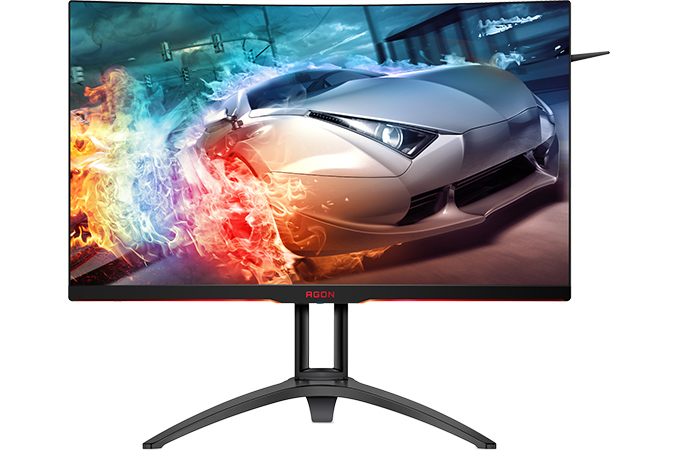
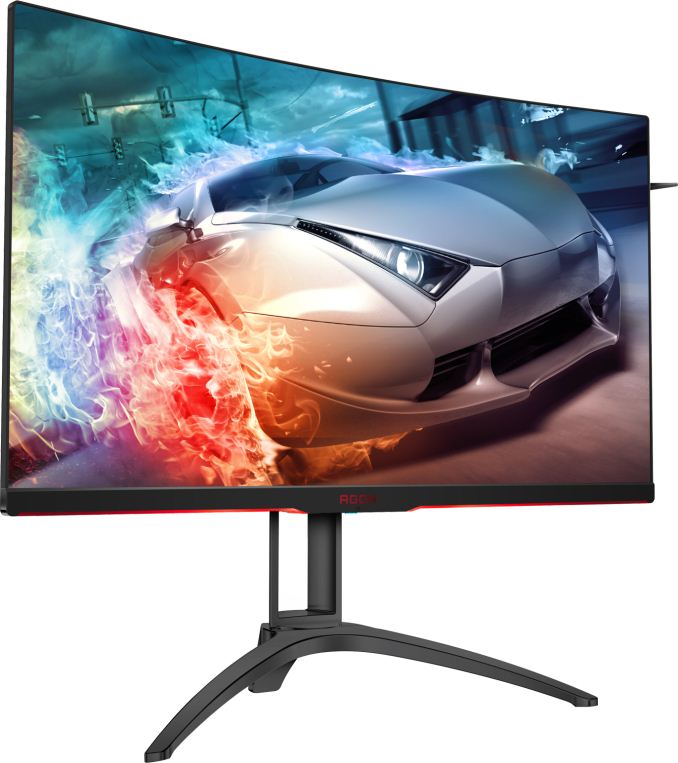
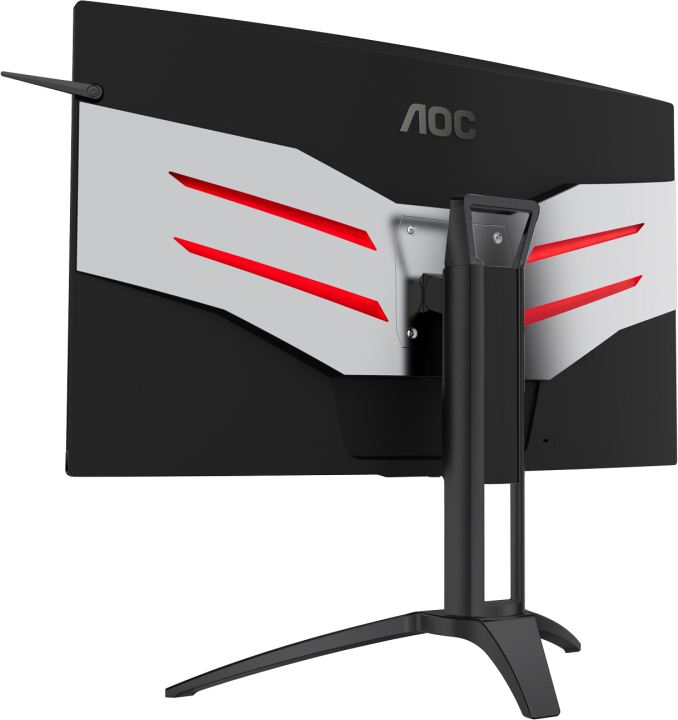
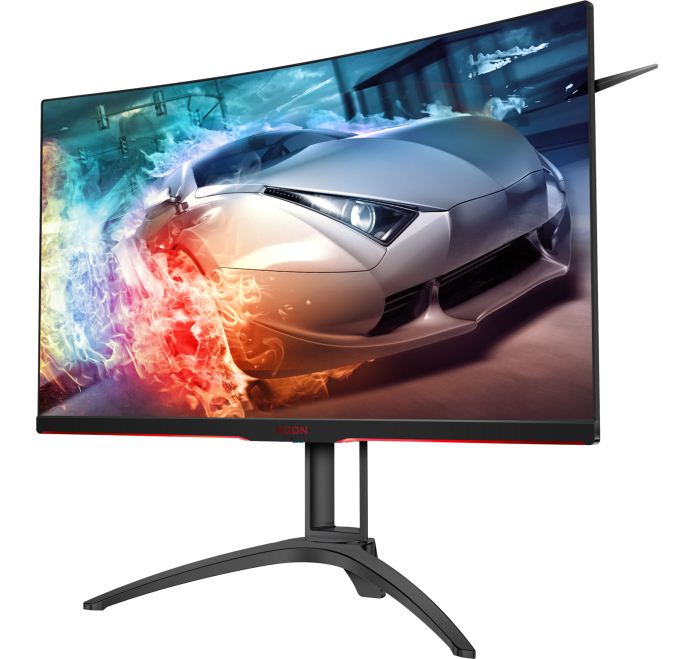


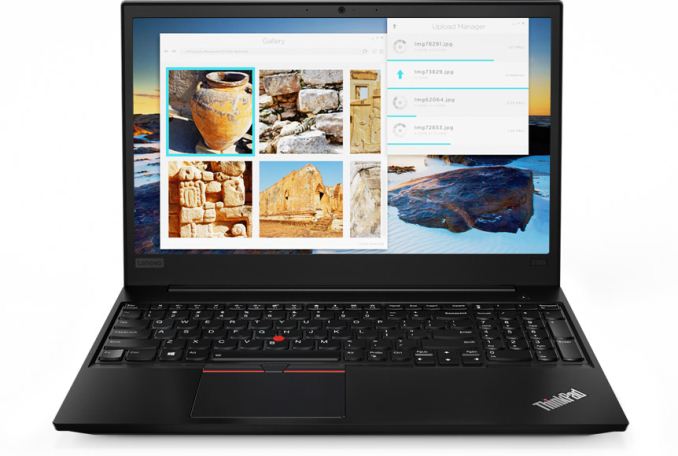

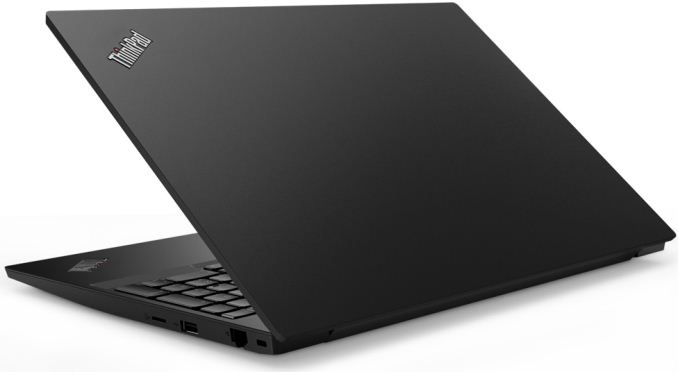
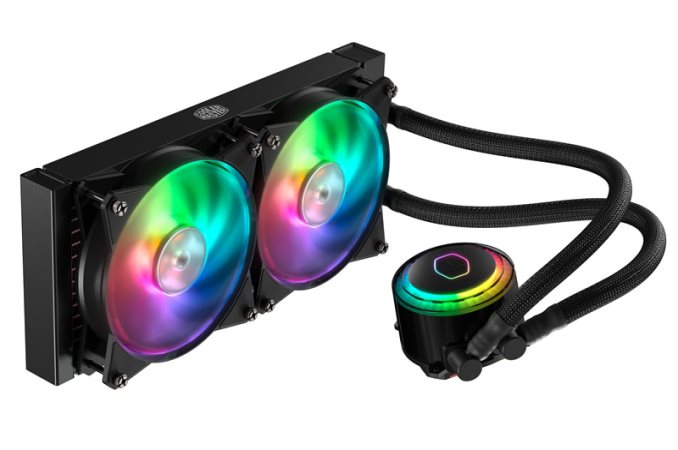
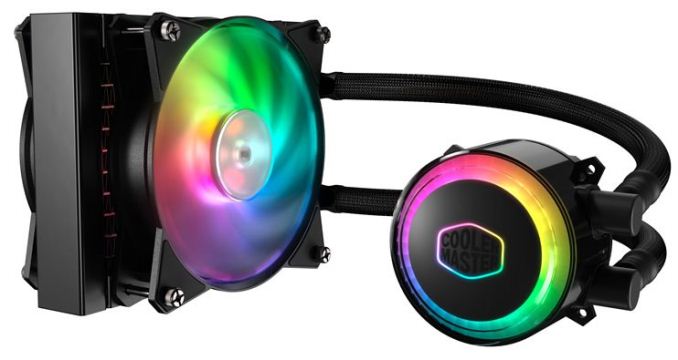
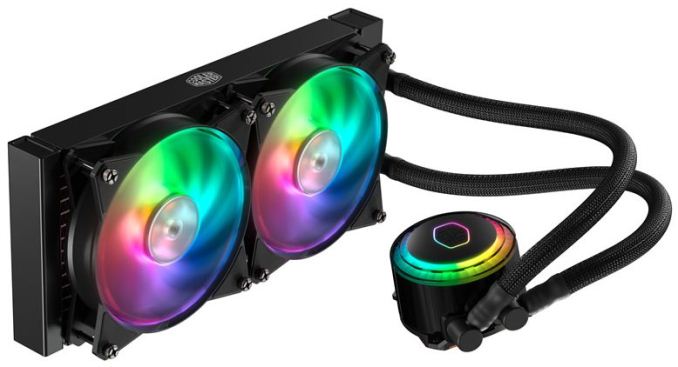
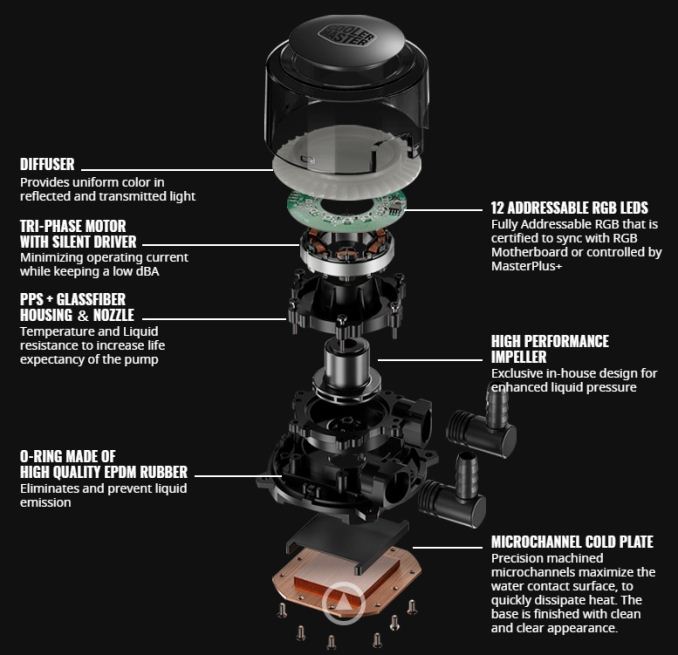
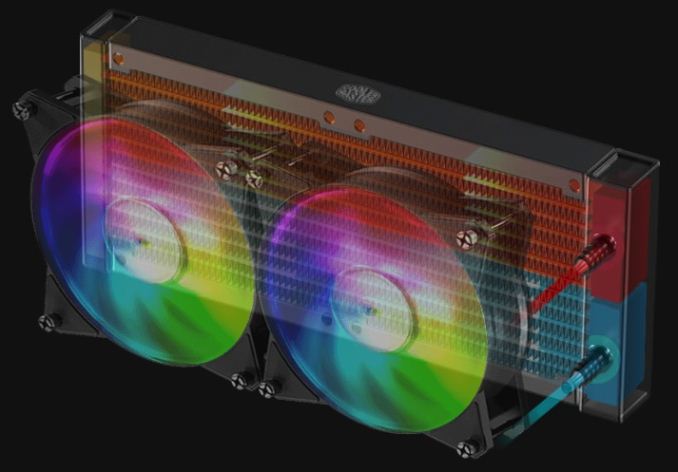


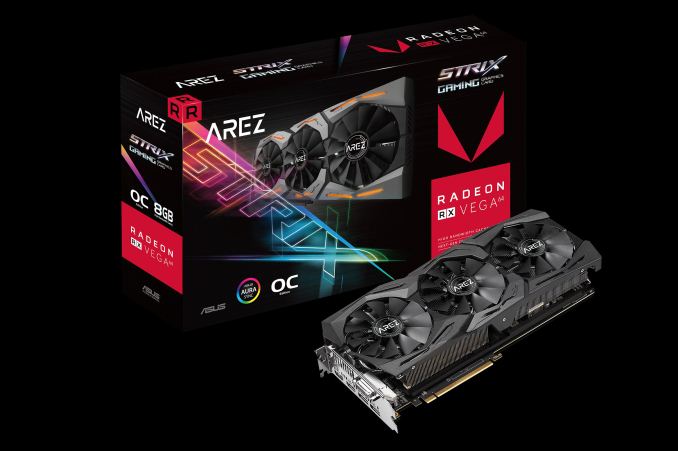
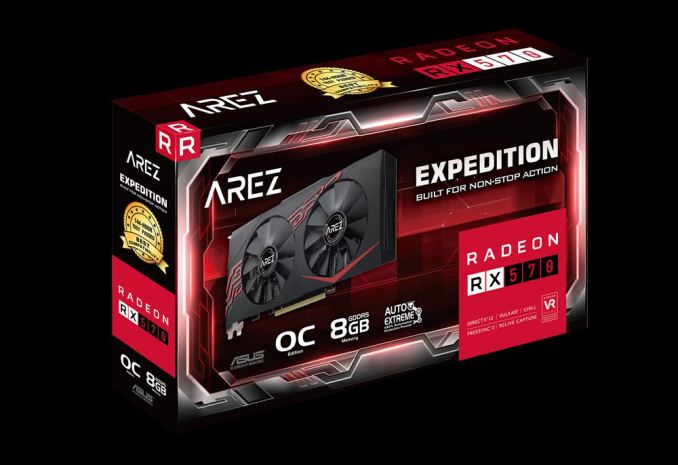

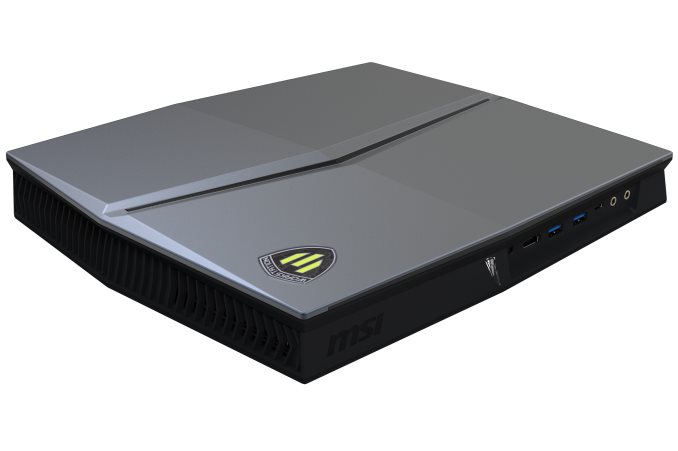
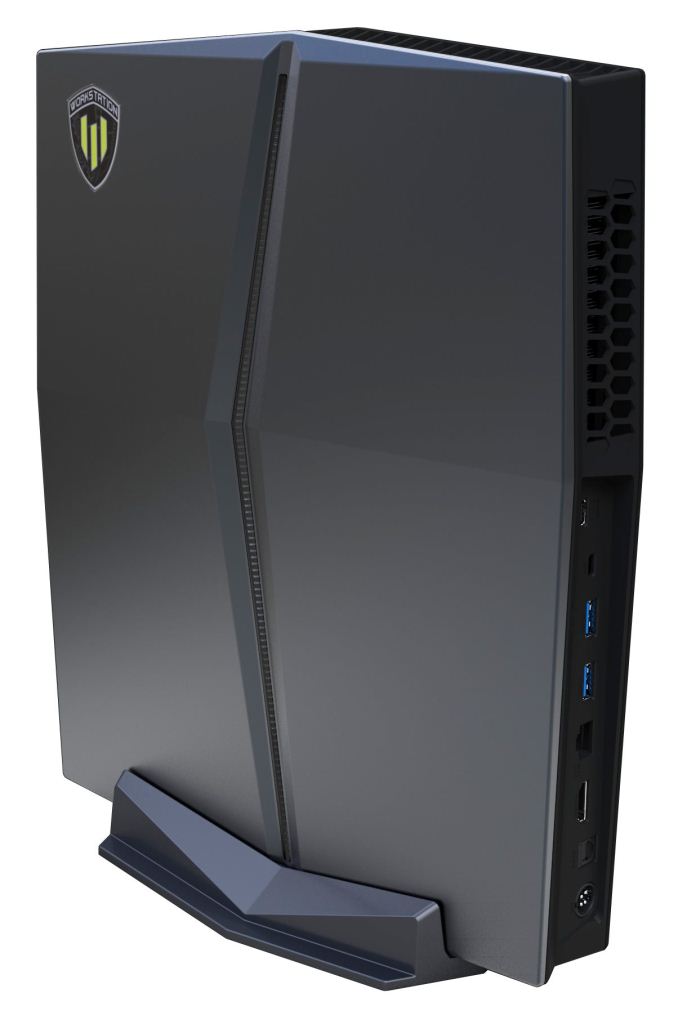
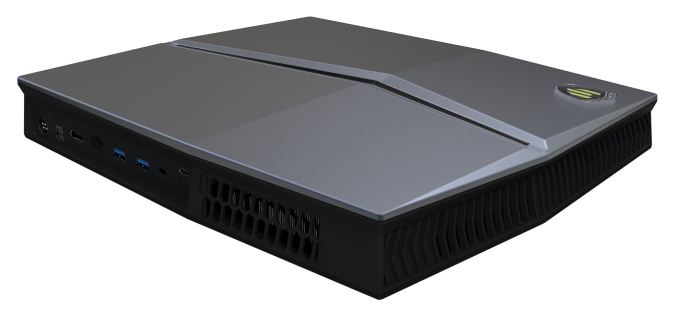

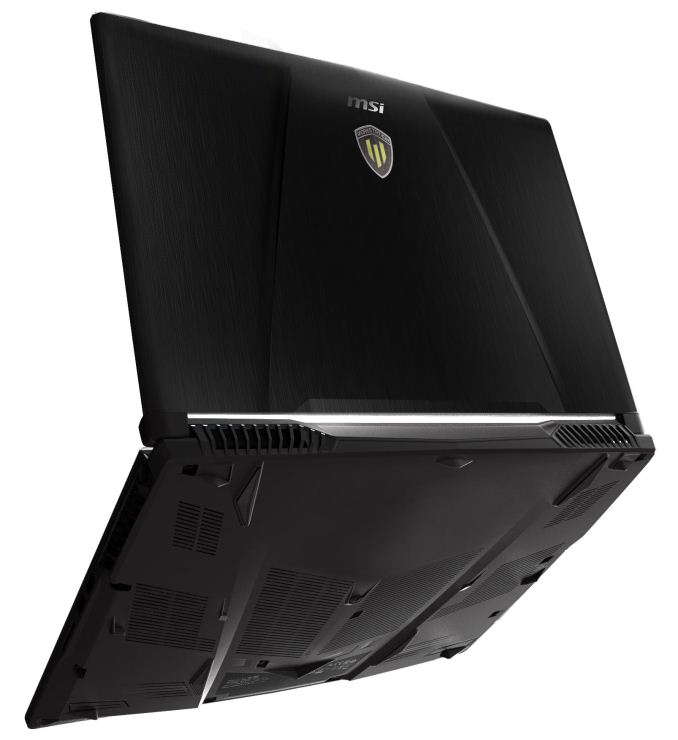
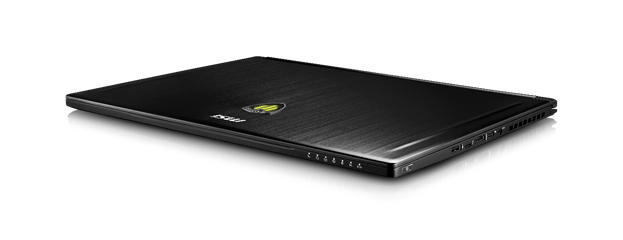
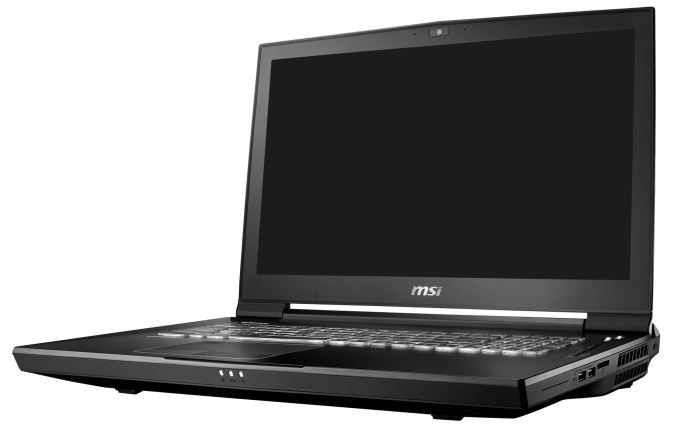
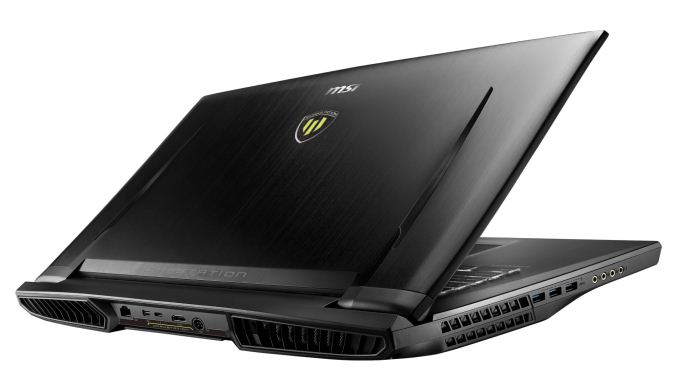
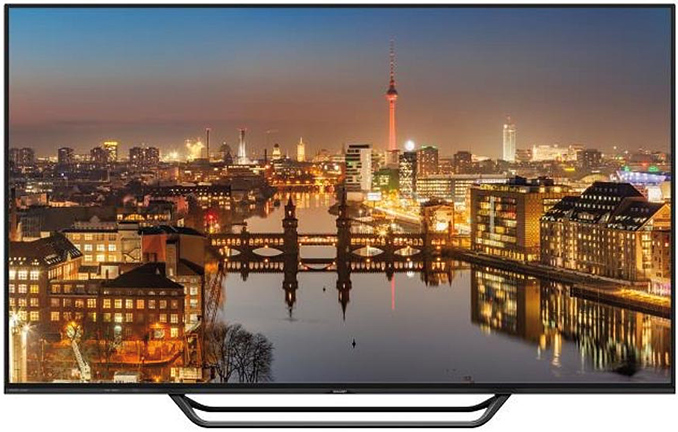
















Bookmarks